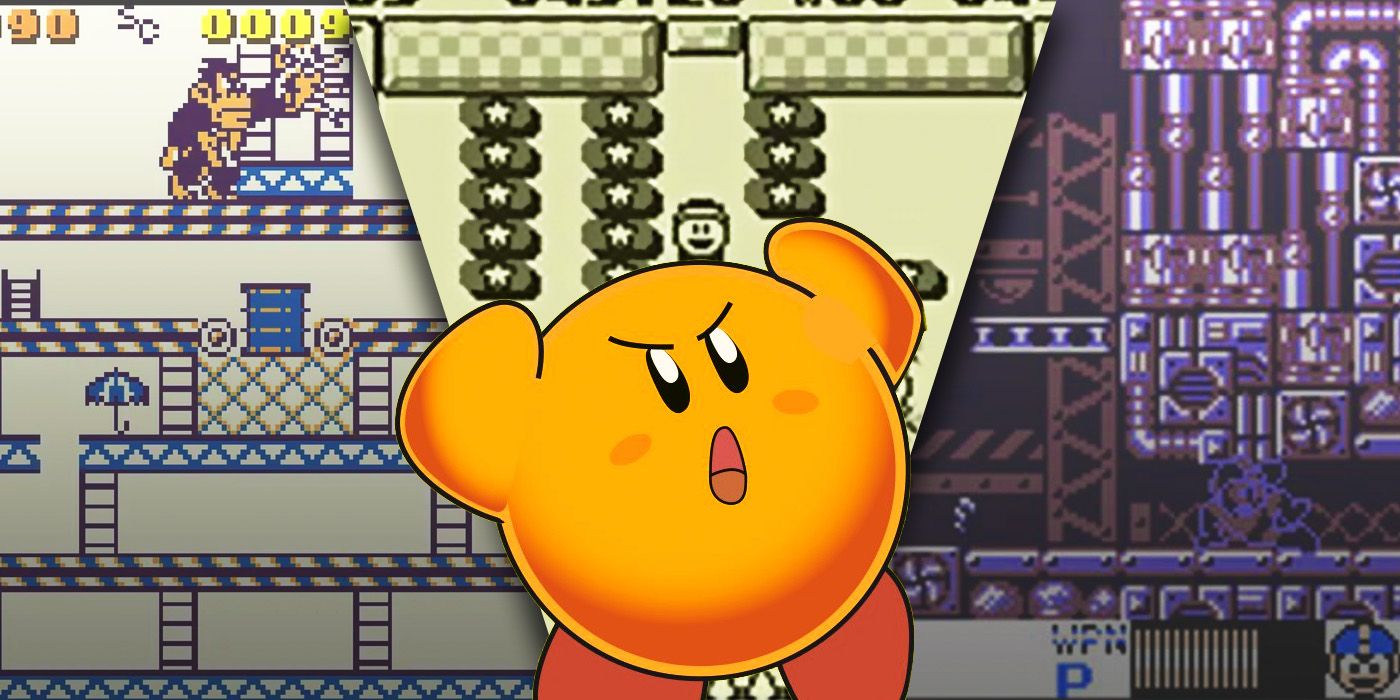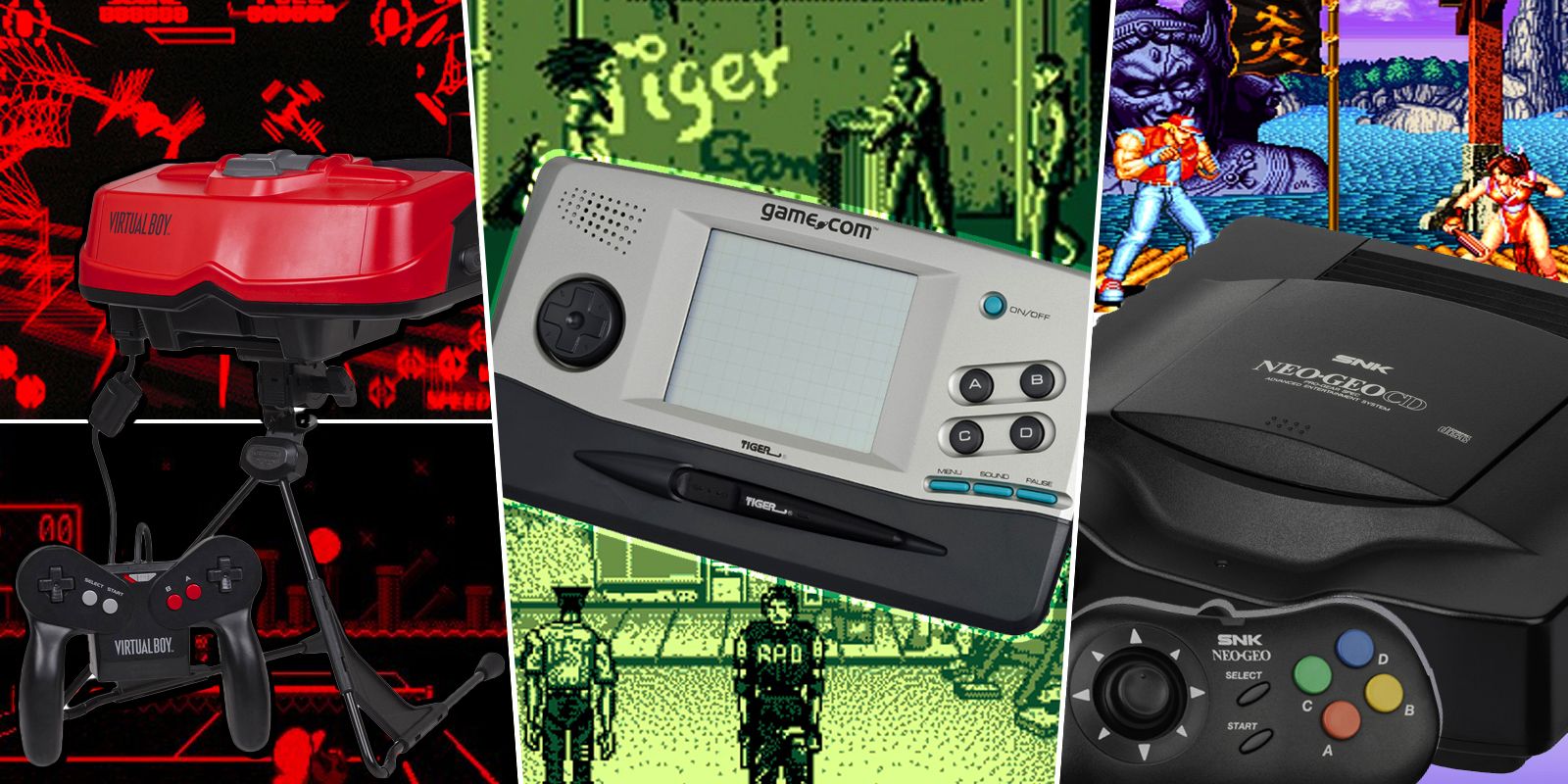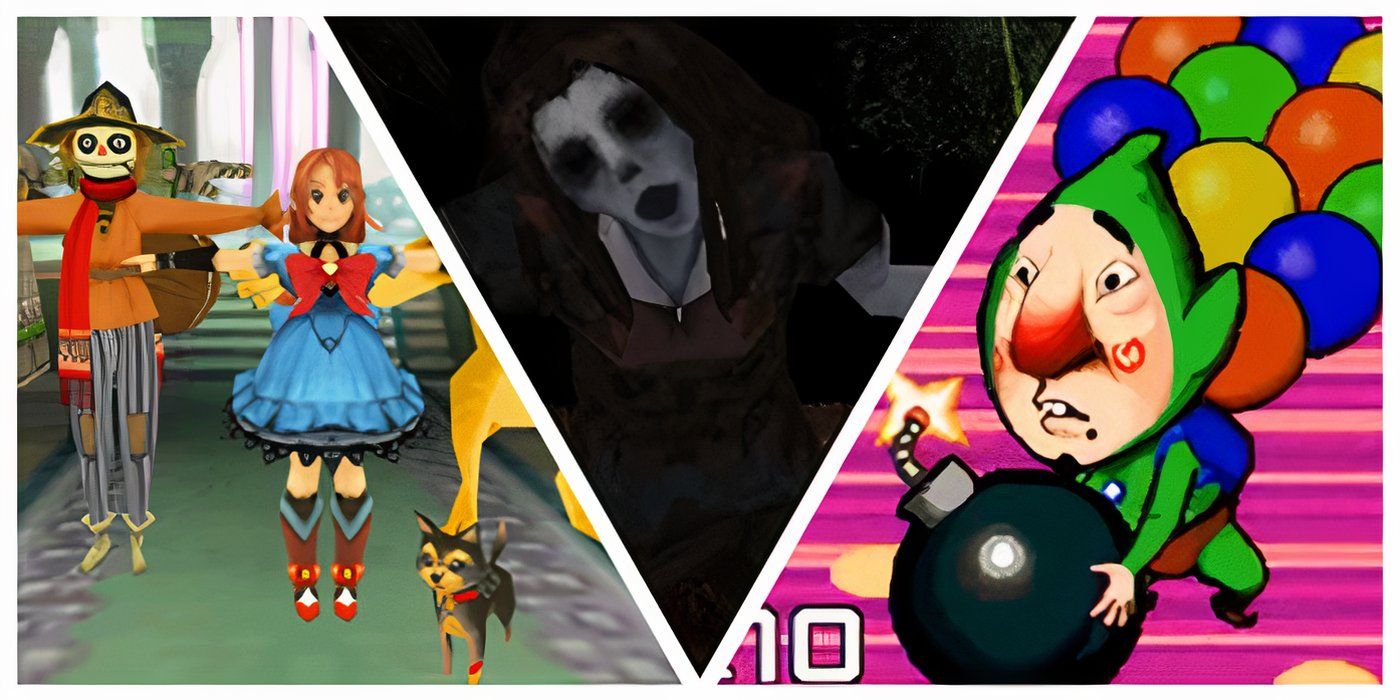Nowadays, video games are known for their uncanny, lifelike graphics. However, in the olden days of video gaming, that simply wasn’t the case. This was especially true of handheld video game consoles, which were always a generation behind home video game consoles in this regard.
As time has passed, however, handheld consoles have slowly started to get better graphics chips, which have come close to being on par with home consoles, like the PlayStation Portable and Nintendo 3DS. It is a sight to behold, and handheld consoles are not getting enough credit for these improvements.
10
The Game Boy Is Memorably Monochrome
It Was a Sure Step up From the Game & Watch Series
|
Console |
Launched |
Discontinued |
Graphics |
|
Nintendo Game Boy |
April 21, 1989 |
March 31, 2003 |
STN LCD |
The Game Boy was Nintendo’s monstrously successful handheld console. It dominated the entire 1990s and continued to impact well into the early 2000s. The Game Boy’s success is attributed to its affordable price compared to its contemporaries. For example, both the Atari Lynx and Sega Game Gear had advanced features, but they came at a steep cost compared to the Game Boy.

Related
15 Most Underrated Games on the Original Game Boy
With tons of games released for it, the Game Boy has way more going for it than just Pokemon and Mario.
Even as early as 1989, many noted the Game Boy for being vastly powerless compared to its competitors, not helping with the original model’s infamous green monochrome screen that hadn’t aged too well. Mercifully, later models either had a sharper black-and-white monochrome screen or were even in color. For what it’s worth, said monochrome did not detract from the Game Boy’s best offerings.
9
The Game Gear Had a Color Screen
But It Drained Many Batteries
The Sega Game Gear was, by far, the main competitor to Nintendo’s Game Boy. “Stretch” is an apt word for describing any handheld attempting to challenge the mighty Game Boy. Still, Sega put significant effort into making the Game Gear viable, offering a library that included old Master System games as well as fresh, original titles.
|
Console |
Launched |
Discontinued |
Graphics |
|
Sega Game Gear |
Oct. 6, 1990 |
Circa 2002 |
Color LCD |
The Sega Game Gear, as with many competitors to the Game Boy in the 1990s, highly touted its color screen. Other than allowing color video games, this color screen also helps to facilitate peripherals for the Game Gear, including a television tuner of all things. However, this color screen forced the Game Gear to carry six AA batteries that could run out within just a few hours.
8
The Atari Lynx Had a Better Color Screen
But It Drained More Batteries
The Atari Lynx was the venerable video game company’s penultimate video game console, being released between the Atari 7800 and the Atari Jaguar. By that virtue, it is also Atari’s only handheld console, released to compete with Nintendo’s dominant Game Boy. Unlike the Game Boy or even the Game Gear, the Lynx had hardware arguably better than most home consoles at the time.
|
Console |
Launched |
Discontinued |
Graphics |
|
Atari Lynx |
Sept. 1, 1989 |
Circa 1995 |
Color LCD |
Also, in contrast to the Game Gear, the Lynx had more alluring graphics, which some of the Lynx’s best games took full advantage of. In some cases, like BattleWheels, the Lynx came dangerously close to replicating 3D graphics. However, as is the case with the Game Gear, these color graphics came at the cost of shortened battery life and having two more batteries than the Game Boy.
7
The Neo Geo Pocket Color Has the Best Color Screen
But It Had to Compete With the Game Boy Color
|
Console |
Launched |
Discontinued |
Graphics |
|
SNK Neo Geo Pocket Color |
March 19, 1999 |
Oct. 30, 2001 |
Color LCD |
The Neo Geo Pocket Color followed SNK’s Neo Geo Pocket, the latter of which had a monochrome screen. On the other hand, as its name suggests, the Neo Geo Pocket Color had a beautiful color screen that can be described as the best of any handheld console in the 1990s. The Pocket Color’s graphics were showcased well in its library, with Sonic the Hedgehog Pocket Adventure being a prime example.

Related
10 Video Game Consoles That Were Tragically Ahead of Their Time
Some video game consoles, like the Virtual Boy and the Game.com, were too ahead of their time for their own good.
Unfortunately for SNK, the Pocket Color had to come out right after the Game Boy Color did. While not having the most vibrant colors compared to the Pocket Color, the Game Boy Color had the benefit of being even more affordable than the original Game Boy model. Although the Pocket Color was less expensive, it ultimately did not stand a chance against the Game Boy Color.
6
The WonderSwan Color Had Wonderful Graphics
It Scared Nintendo Into Creating the Game Boy Advance
The WonderSwan Color was Bandai’s final attempt at breaking through the video game console market, and by all means, it was their most successful attempt. The WonderSwan Color was only released in Japan and featured a much more vibrant color screen than any other handheld video game console at that point. Its FSTN LCD screen helps make the WonderSwan Color’s colors all the more vibrant.
|
Console |
Launched |
Discontinued |
Graphics |
|
Bandai WonderSwan Color |
Dec. 9, 2000 |
Circa 2003 |
FSTN LCD |
Unfortunately, like any good Game Boy competitor that tried to be cutting-edge, Nintendo quickly noticed the WonderSwan Color’s advanced graphical hardware and responded accordingly with the Game Boy Advance. The GBA not only had better graphics than the WonderSwan Color but also better audio hardware, coming close to being a portable Super Nintendo.
5
The Game Boy Advance Was Like a Portable SNES
It Had the Best Graphics of Any 2D Handheld Video Game Console
The Game Boy Advance was the last handheld video game console in Nintendo’s Game Boy series. It’s also the best of the Game Boy systems by a long margin, with a notably improved sound that takes cues from the Super Nintendo. Also, taking cues from the Super Nintendo is the handheld’s superior graphics that no other handheld could match.
|
Console |
Launched |
Discontinued |
Graphics |
|
Nintendo Game Boy Advance |
March 21, 2001 |
Circa 2010 |
TFT LCD |
Indeed, many Game Boy Advance games look almost identical to what could’ve been found on the Super Nintendo; the GBA was even capable of the same visual effects as the older video game system. The only trouble is that, at least with the first model, colors tended to be washed out in order to accommodate the Game Boy Advance’s still dim screen.
4
The Nintendo DS Has Twice the Graphical Power
It Has Two 3D Screens for More Fun
|
Console |
Launched |
Discontinued |
Graphics |
|
Nintendo DS |
Nov 21, 2004 |
Circa 2014 |
ARM946E-S |
The Nintendo DS is both Nintendo’s best-selling handheld console and the best-selling handheld console of all time. Just looking at the DS, it is easy to understand why it was so successful. Two screens, one displaying information and the other the game, proved to be a surprisingly nifty gimmick compared to most Nintendo gimmicks.

Related
The Nintendo DS was a groundbreaking gaming handheld, but it’s also the home for some truly odd and unbelievable releases.
It also helps that the DS had the best graphics of any handheld video game console up until that point. The Nintendo DS’s graphics are powered by the ARM processor, which also powers its games, while the other ARM processor facilitates additional functions, including sound. This allowed the DS to display some very impressive graphics, as demonstrated in Super Mario 64 DS.
3
The PlayStation Portable Is Like a PlayStation 2
Sony Was Playing With Portable Power
The PlayStation Portable was Sony’s paradoxical attempt at competing with Nintendo in the handheld market. Released shortly before the PlayStation 3, which shared its user interface, the PSP offered more than just vastly superior hardware compared to Nintendo’s devices. Specifically, it had significantly better graphics than any of Nintendo’s offerings.
|
Console |
Launched |
Discontinued |
Graphics |
|
Sony PlayStation Portable |
Dec. 12, 2004 |
Circa Dec. 2014 |
Surface Engine |
Unlike any of Nintendo’s handheld offerings, the PlayStation Portable has a dedicated graphics chip called the Surface Engine, which helped to facilitate the idea that the PSP was a portable PlayStation 2. This graphics chip helped to render games like Grand Theft Auto: Liberty City Stories, which is a full-fledged Grand Theft Auto with graphics comparable to any home console GTA game available at the time.
2
The Nintendo 3DS Has the 3D Gimmick
3DS Games Looked Like Wii Games
The Nintendo 3DS was Nintendo’s last handheld video game console and a good handheld video game console to go out on. The 3DS is basically a portable Wii crossed over with a DSi, with many of the 3DS’s games and applications mirroring that of the Wii, along with having similar digital offerings to the DSi. More crucially, the 3DS is best known for its stereoscopic 3D gimmick.
|
Console |
Launched |
Discontinued |
Graphics |
|
Nintendo 3DS |
Feb. 26, 2011 |
Sept. 16, 2020 |
PICA200 |
Stereoscopic 3D allows players to practically see the inside of a 3DS game, as well as being able to manipulate in-game objects. This component is powered by the 3DS’s dedicated graphics chip, which also renders almost the Wii-like graphics games that are generally used. The 3DS is notably the only Nintendo handheld that utilizes a dedicated graphics chip, compared to the integrated graphics in the others.
1
The PlayStation Vita Has the Best Handheld Graphics
It Doesn’t Get Enough Attention for That
|
Console |
Launched |
Discontinued |
Graphics |
|
Sony PlayStation Vita |
Dec. 17, 2011 |
March 1, 2019 |
PowerVR SGX543MP4+ |
The PlayStation Vita was far less successful than Sony’s earlier handheld, the PlayStation Portable. As a result, it was largely forgotten for a time outside a dedicated community, contributing to the decline of handheld consoles in favor of mobile gaming. Despite this, the Vita had plenty to offer, including the best graphics of any handheld console.

Related
The 15 Best Video Games on the PS Vita
Persona 4 Golden, Uncharted: Golden Abyss, and Final Fantasy X/X-2 HD Remaster are among some of the finest games that the PS Vita has to offer.
As with the PSP, the Vita makes use of a dedicated graphics chip. More specifically, the Vita uses a PowerVR graphics processor that allows for advanced 3D rendering. In other words, Vita games tend to resemble the PlayStation 3, let alone have games that look even better than what could’ve been found on the PlayStation 3. This meant that popular titles like Minecraft could exist on the Vita.
















